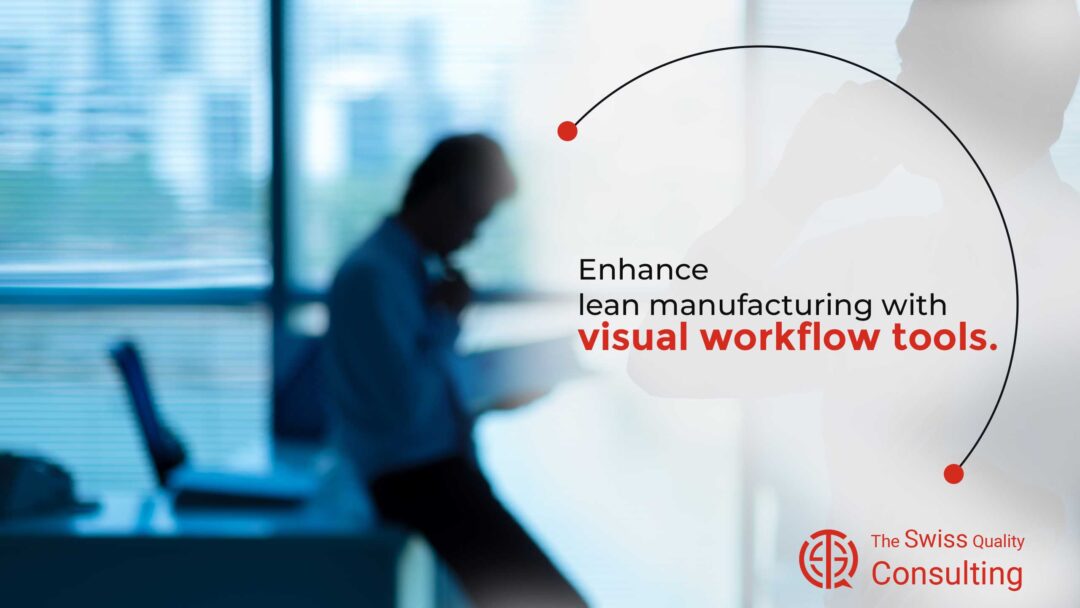Optimizing Efficiency in Lean Manufacturing Through Visual Workflow Management: A Strategy to Enhance Lean Manufacturing with Visual Workflow Tools
In an era where efficiency and productivity are paramount, enhancing lean manufacturing with visual workflow tools is becoming increasingly vital for businesses, particularly for business executives, mid-level managers, and entrepreneurs. This article aims to provide an informational and persuasive overview of how integrating visual workflow tools can significantly bolster lean manufacturing practices.
The Importance of Lean Manufacturing
In the dynamic and competitive realm of manufacturing, where efficiency and cost-effectiveness reign supreme, lean manufacturing has emerged as a cornerstone methodology for waste elimination and value maximization. This systematic approach to streamlining operations has revolutionized the industry for decades, empowering businesses to achieve remarkable levels of productivity, quality, and customer satisfaction. At the heart of lean manufacturing lies the unwavering focus on value creation for the end customer. By identifying and eliminating non-value-adding activities, lean principles ensure that every step of the manufacturing process contributes directly to fulfilling customer needs and expectations.
This relentless pursuit of value creation manifests in a multitude of lean practices that have become synonymous with operational excellence. These practices include:
Value Stream Mapping: A visual representation of the entire manufacturing process, enabling businesses to identify and eliminate bottlenecks, redundancies, and non-value-adding activities.
5S: A workplace organization methodology that emphasizes sorting, setting in order, shining, standardizing, and sustaining, creating a clean, efficient, and safe work environment.
Kanban: A pull system for managing production, ensuring that products are only manufactured when there is a customer demand, minimizing waste and inventory overstock.
Total Productive Maintenance (TPM): A proactive approach to equipment maintenance, preventing breakdowns and ensuring that machines are always operating at peak efficiency.
Just-in-Time (JIT) Inventory: A system of inventory management that minimizes the amount of raw materials and finished goods stored at the production facility, reducing waste and optimizing inventory costs.
The implementation of lean manufacturing principles extends far beyond the factory floor, encompassing the entire organization, from procurement to distribution. By aligning all departments with the core principles of value creation and waste elimination, businesses can achieve a holistic transformation towards operational excellence.
The benefits of lean manufacturing are not merely theoretical; they are tangible and transformative. Businesses that embrace lean principles can expect to:
Reduce Costs: By eliminating waste and optimizing processes, lean manufacturing significantly reduces production costs, leading to improved profitability and financial stability.
Enhance Quality: The focus on value creation and defect prevention drives continuous quality improvement, ensuring that products meet or exceed customer expectations.
Improve Lead Times: Streamlined processes and reduced waste lead to shorter lead times, enabling businesses to respond swiftly to customer demands and market opportunities.
Increase Productivity: By eliminating non-value-adding activities, lean manufacturing maximizes employee productivity, leading to increased output and efficiency.
Enhance Employee Engagement: The emphasis on continuous improvement and employee involvement fosters a culture of engagement, innovation, and problem-solving within the organization.
In conclusion, lean manufacturing is not merely a set of techniques or methodologies; it is a philosophy that permeates every aspect of an organization, transforming the way businesses operate, think, and approach value creation. By embracing lean principles, businesses can achieve sustainable growth, operational excellence, and a competitive edge in the ever-evolving manufacturing landscape.
Visual Workflow Tools: A Catalyst in Lean Manufacturing
Visual workflow tools are instrumental in lean manufacturing as they provide a clear and concise representation of production processes. They help in identifying bottlenecks, streamlining operations, and facilitating better communication among team members, leading to more efficient and error-free production.
Change Management in Implementing Visual Workflow Tools
Successfully integrating visual workflow tools into manufacturing processes involves effective change management. It requires a shift in mindset from traditional practices to a more visually oriented approach. This change demands strategic planning, thorough training, and gradual implementation to ensure a smooth transition.
Executive Coaching for Effective Implementation of Lean Strategies
Executive coaching can be highly beneficial in guiding leadership through the nuances of implementing lean manufacturing strategies augmented with visual workflow tools. It enhances leadership and management skills, ensuring that executives can effectively oversee the transition and foster a culture of continuous improvement.
The Role of Generative AI in Lean Manufacturing
Generative Artificial Intelligence (AI) can play a significant role in further enhancing lean manufacturing. AI-driven tools can predict trends, automate parts of the workflow, and provide deep insights into operational efficiencies, thereby complementing visual workflow tools.
Effective Communication for Lean Manufacturing Success
Effective communication is crucial in implementing lean manufacturing with visual workflow tools. Clear and consistent communication ensures that all team members understand the processes, changes, and the rationale behind them, fostering a collaborative and transparent work environment.
Project Management in Lean Manufacturing Initiatives
Effective project management is critical in rolling out lean manufacturing initiatives integrated with visual workflow tools. It involves careful planning, resource allocation, monitoring, and adjusting strategies as necessary to ensure the success of lean manufacturing efforts.
Conclusion: The Future of Manufacturing Efficiency
In conclusion, enhancing lean manufacturing with visual workflow tools offers a promising path towards increased efficiency and productivity in the manufacturing sector. By embracing these tools, along with effective change management, executive coaching, and generative AI, businesses can achieve significant improvements in their manufacturing processes, leading to greater business success.
#LeanManufacturing #VisualWorkflow #ManufacturingEfficiency #ExecutiveCoaching #GenerativeAI #ProjectManagement

